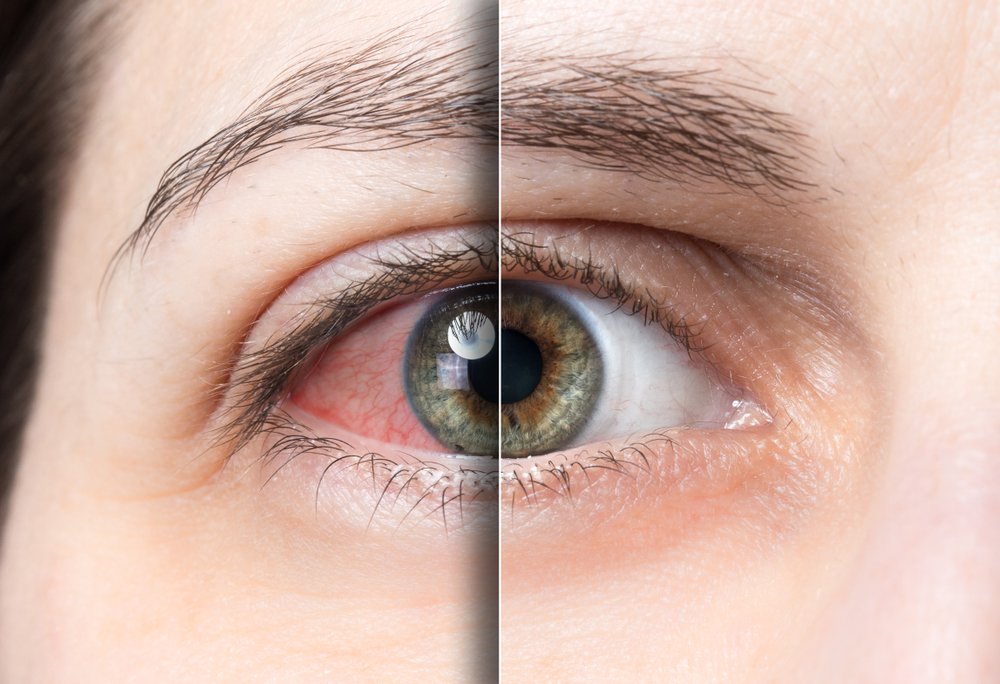
As we get older, our tear production starts to slow down. That’s why the majority of adults with dry eyes are middle-aged or older. When left untreated, dry eyes can actually lead to blurred vision and excessive tearing. Fortunately, there are numerous at-home and professional remedies for this common condition.
What Are The Symptoms Of Dry Eyes?
If you have dry eyes, you will notice one or more of the following:
- Redness
- Pain while putting in contacts
- Scratchy or stinging eyes
- Strings of mucus in or near the eyes
What Causes Dry Eyes?
There are a number of different triggers for dry eyes, including:
- Excess contact lens wear
- Irritants in the environment (e.g. dust, smoke, and other pollutants)
- Taking certain medications
- Previous eye surgery
- Digital eye strain
- Thyroid disease
- Lupus
- Sjogren's syndrome
- Parkinson’s disease
How Can I Treat Dry Eyes
Treatment for dry eyes will depend on what exactly has caused your dry eyes, as well as your overall health condition. However, your eye doctor may recommend one or more of the following treatments:
1. Home Remedies
If your dry eye symptoms are mild, your eye doctor may first recommend that you practice the following at home:
- Holding a warm compress to your eyelids
- Wearing glasses instead of contact lenses
- Blinking more often
- Taking frequent screen breaks
- Removing eye makeup every night
- Wearing sunglasses outdoors
2. Artificial Tears
One of the most popular ways to treat dry eyes is to use artificial tears and lubricating eye drops. They are a good solution for mild cases of dry eye that arise from everyday activities such as staring at a computer screen or reading for long periods of time. There are a wide variety of artificial tears brands to choose from, ranging from low viscosity (thin and watery) to high viscosity (thick and gel-like). Your eye doctor can recommend which artificial tear brands will work best for you, depending on the type and severity of your symptoms.
3. Punctal Plugs
Punctal plugs are small, sterile medical devices that are inserted into the tear ducts to prevent tears from draining out. This keeps tear film intact on the surface of the eyes, thereby relieving dry eye symptoms. The insertion of punctual plugs is a safe, non-invasive procedure that is typically performed when non-prescription or prescription eye drops have failed to provide adequate relief.
4. Prescription Eye Drops/Ointments
Prescription eye drops contain immune-suppressing properties that can soothe inflammation in the eye. These are not available over-the-counter (OTC); they must be prescribed to you by an eye doctor. Eye ointments are applied before bedtime and can provide relief from dry, sore eyes while you sleep.
Find Relief at Everett & Hurite Eye Care
Dry eyes are a common condition that can affect individuals of all ages. While the symptoms may seem minor at first, if left untreated they can lead to more serious issues such as blurry vision and excessive tearing. Fortunately, there are many at-home and professional remedies available to help manage dry eyes and provide relief from discomfort.
At Everett & Hurite, our dry eye specialists are equipped with the latest diagnostic technology to diagnose dry eyes. Our TearLab Osmolarity System and LipiView tool allow us to thoroughly evaluate your dry eye condition, and make the best possible recommendations for treatment. We have 10 offices conveniently located in Western Pennsylvania. Request an appointment with one of the physicians or call 412-288-0858 for dry eye relief today.
Frequently Asked Questions
Why do I have poor-quality tears?
Poor-quality tears can be caused by a variety of factors, including age, contact lens wear, environmental irritants, certain medications, and underlying health conditions such as thyroid disease or lupus.
How can I use warm compresses to relieve dry eyes?
Warm compresses are a great at-home remedy for relieving dry eyes. Simply soak a clean washcloth in warm (not hot) water and place it over closed eyelids for 5-10 minutes, repeating as necessary. This helps to stimulate the production of oily tears and reduces tear evaporation.
What should I eat for better eye health?
A diet rich in nutrients such as omega-3 fatty acids found in fish oil can improve eye health and help with dry eyes. Consuming foods like salmon, tuna, sardines, and mackerel that are high in omega-3s can benefit your overall eye health.
How can I tell if I have aqueous deficient dry eye?
Aqueous deficient dry eye is a type of dry eye caused by the inability of tear glands to produce enough tears. If you experience symptoms such as redness, pain while wearing contacts, and strings of mucus in or near your eyes, you may have this condition. Consult with our eye doctor at Everett & Hurite for a proper diagnosis.
